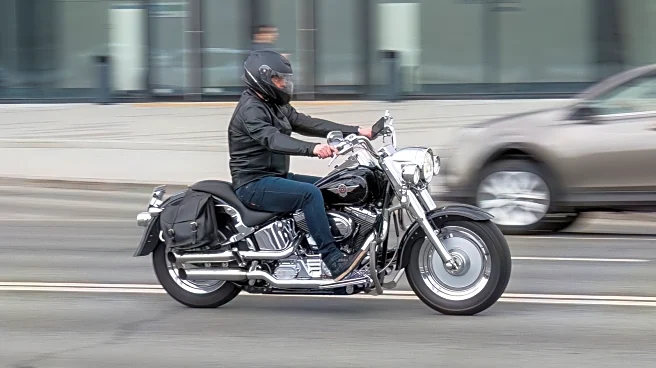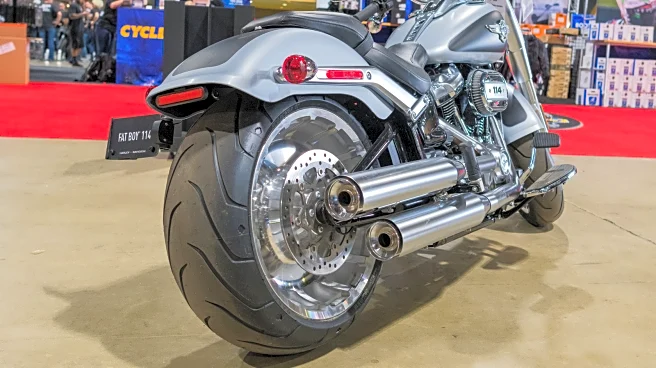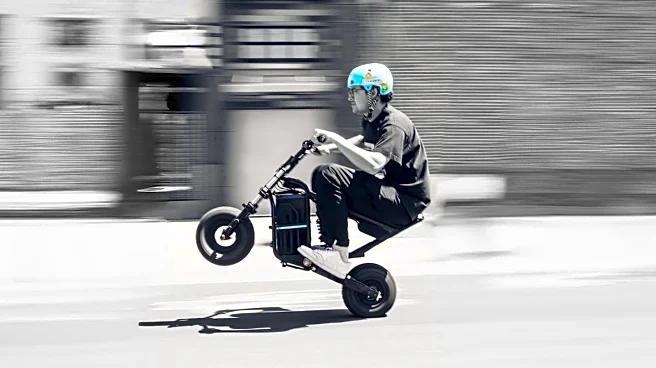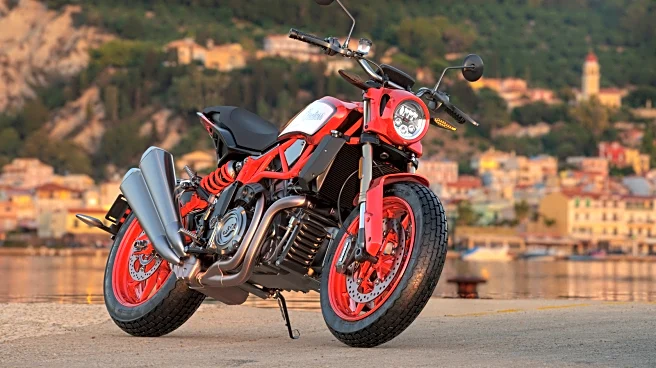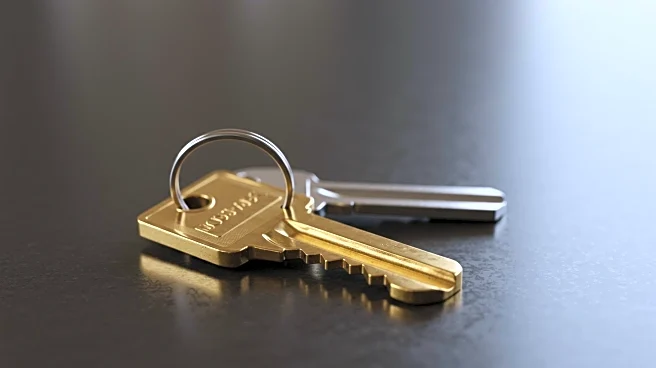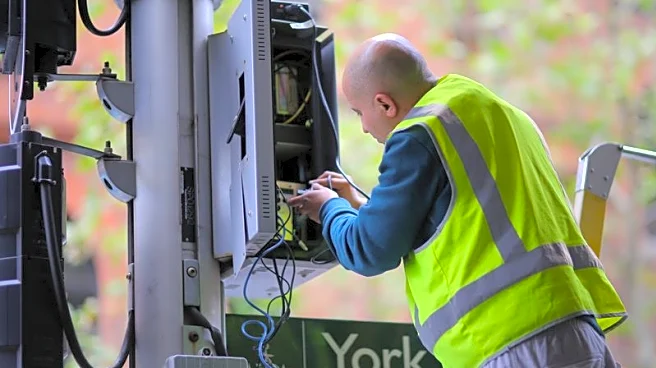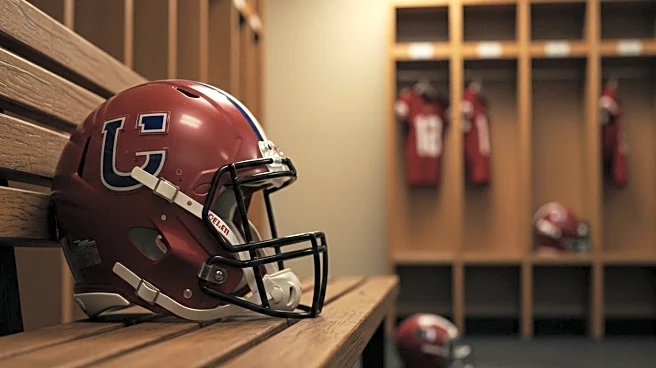
The Fat Boy is one of the coolest and most iconic Harley-Davidsons out there. It is a rolling piece of Americana, but it is also known for being challenging to ride. While you could argue that most Harley-Davidson motorcycles are difficult to handle, the Fat Boy has earned special notoriety on that front. In fact, motorcycle journalist Jeff Ware of Bike Review Australia says that even the slightest steering input turns the 2023 Harley-Davidson Fat Boy into a difficult motorcycle to ride. There are three
major reasons for this -- weight, fat tires, and low lean angles.
The Fat Boy's unwieldiness might seem surprising given the way the cruiser is depicted in movies. Take, for instance, the iconic jump during the chase scene in "Terminator 2: Judgment Day," where Arnold rides the Fat Boy off a freeway and into a storm drain, giving the illusion that the Fat Boy isn't that fat.
In reality, the motorcycle was hanging off digitally erased cables for the jump scene, which reduced the weight of the motorcycle and rider to make the jump manageable for the stunt rider. However, the real Fat Boy without the rider weighs a whopping 694 pounds, and inexperienced riders can end up having a hard time controlling it.
Read more: These Are Your Favorite Factory Exhaust Designs
A Proper Workout

Motorcycle journalist Mark Hinchliffe wrote for the Royal Automobile Club of Queensland that the Fat Boy demands riders have biceps like Arnold Schwarzenegger to counter-steer and hold the bike on its cornering line. The massive 160-mm front and 240-mm rear tires wrapped over solid cast aluminum Lakester wheels add weight, which means you need to put in physical effort to execute fast direction changes. The flat profile tires want to keep the motorcycle upright, making it harder to counter-steer and keep the motorcycle leaned in when tackling a corner.
Then there is the issue of tramlining, or the tire's tendency to follow the cracks on the road. The Fat Boy's thick tires tend to follow the road's camber in the downhill direction, requiring constant adjustments, making the riding experience tiresome. The Fat Boy does offer fantastic straight-line stability. The weight has some to do with it, as does the low center of gravity and thick tires. It is when you get to the corners that the trouble starts.
The Fat Boy has just 25.6 degrees of lean angle, which means a bit of lean, and you will be scraping the footboards on the tarmac. Do that often, and you'll end up damaging them.
Who Is The Fat Boy For Then?

Riding the Harley-Davidson Fat Boy comes with a steep learning curve. While those fat tires look cool, they hold the motorcycle back when it comes to handling in corners and the feeling of effortlessness. The large dimensions and long wheelbase also make it difficult to maneuver in traffic. Motoring journalists aside, even enthusiast riders on forums say that the Fat Boy isn't for beginners.
The Fat Boy is for intermediate and expert riders, and even for them, it takes some getting used to. This is especially important to be able to understand the tipping point of the motorcycle and get used to it while cornering. Due to the profile of the fat tires, the Fat Boy is resistant to lean, but once it goes past that angle, it tips in quickly.
The Harley-Davidson Fat Boy is for riders who are looking for a large, comfortable cruiser. It is an iconic motorcycle, with a distinctive, burly style that turns heads even 35 years after it was launched. We're hoping that it remains unchanged now that Harley-Davidson's new CEO is a dork.
Want more like this? Join the Jalopnik newsletter to get the latest auto news sent straight to your inbox...
Read the original article on Jalopnik.
